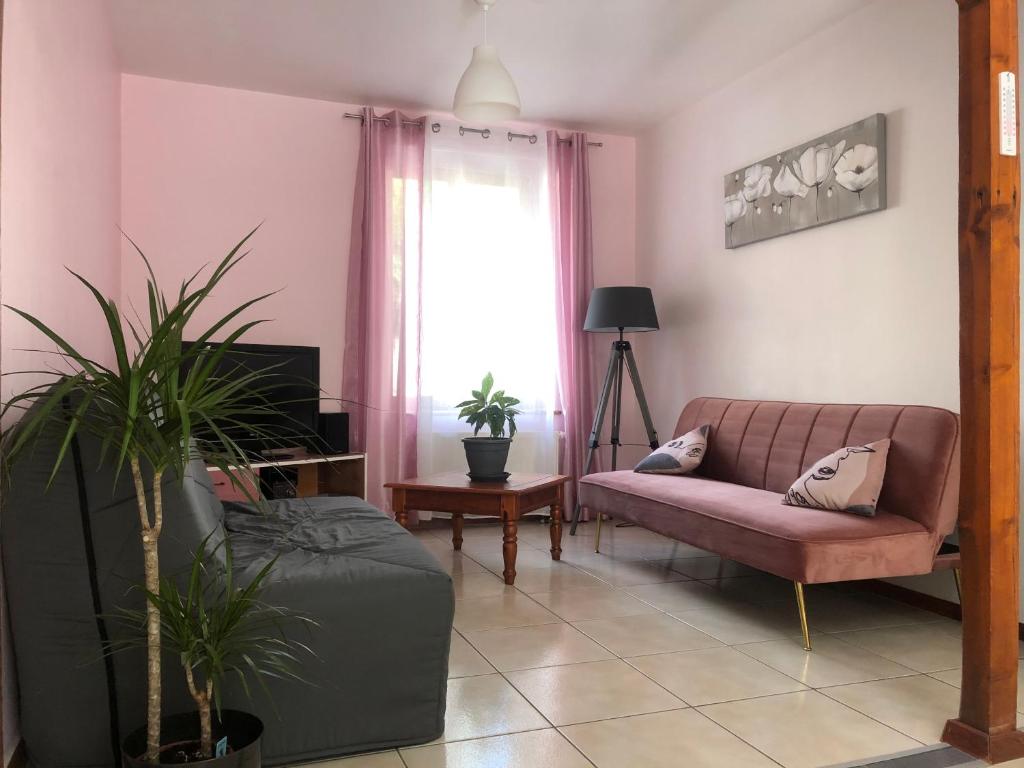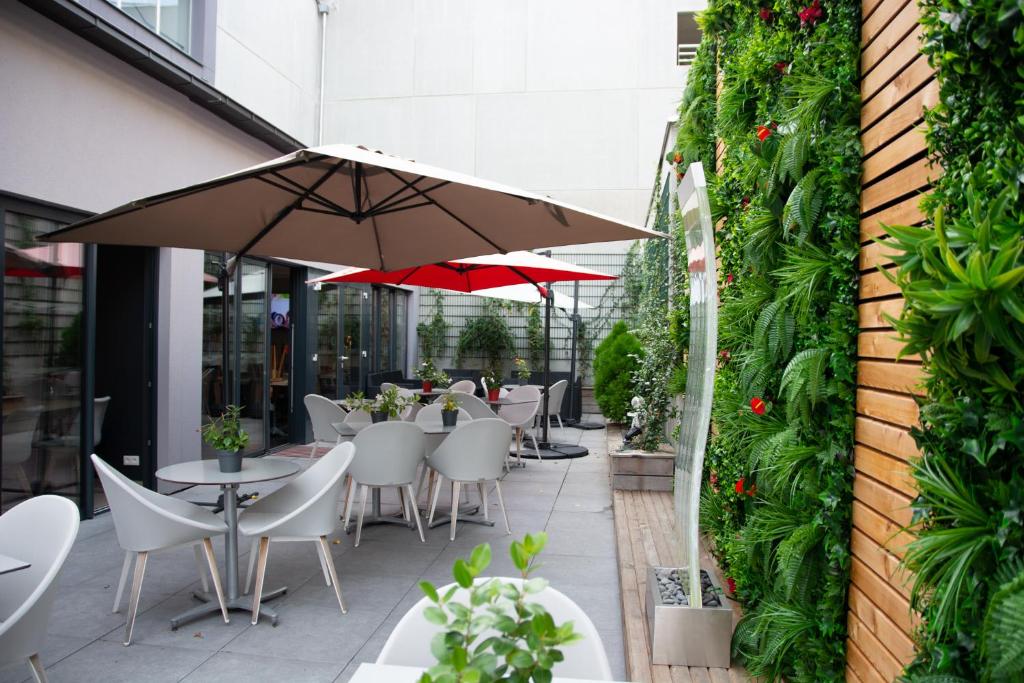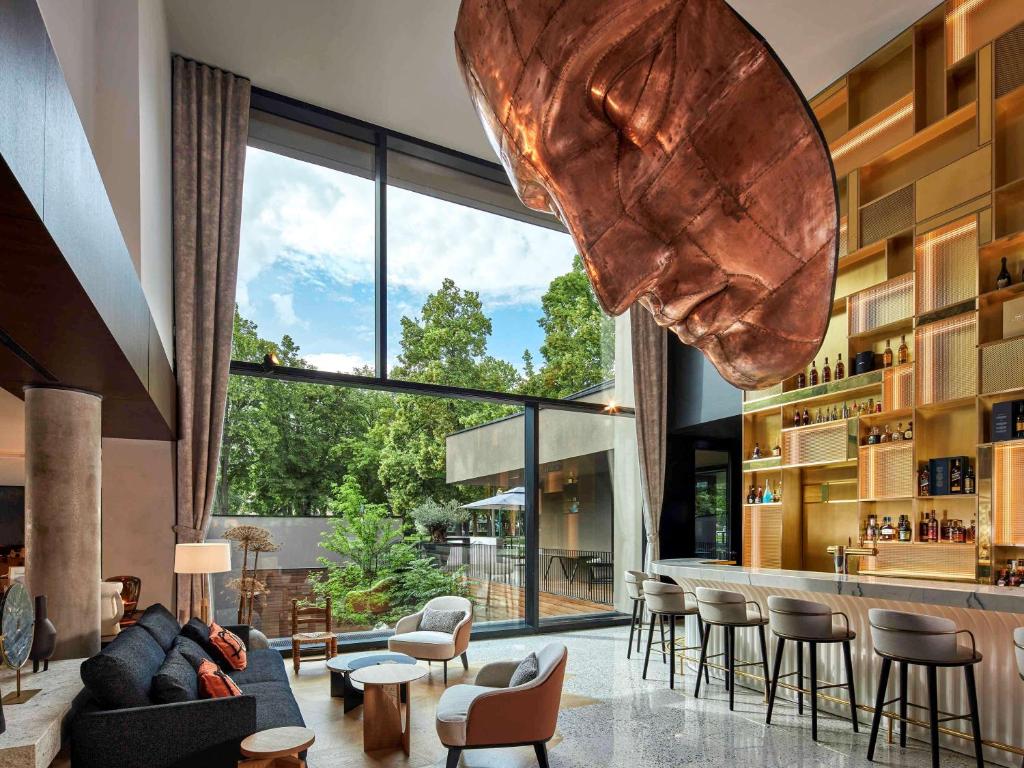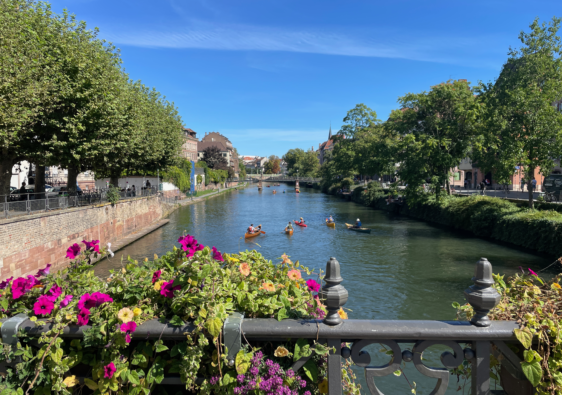The Alsace Wine Route and its Enchanting Towns
Alsace is a beautiful region in northeastern France, located on the border with Germany. It is known for its rolling hills, vineyards, and charming villages. The region is known for its unique blend of French and German cultures, which is reflected in its architecture, food, and language.
The Alsace Wine Route is a 170-kilometer (106-mile) long scenic road that winds through the Alsace wine region in northeastern France. It starts near Strasbourg in the north and ends just south of Colmar. The towns along this route are absolutely stunning; we definitely recommend carving out some time to explore each of them. Below, we’ll get into what makes each of them special and what recommendations we have for your trip!
Please note that some of the links below may be affiliate links, and at no additional cost to you, we earn a commission if you make a purchase.
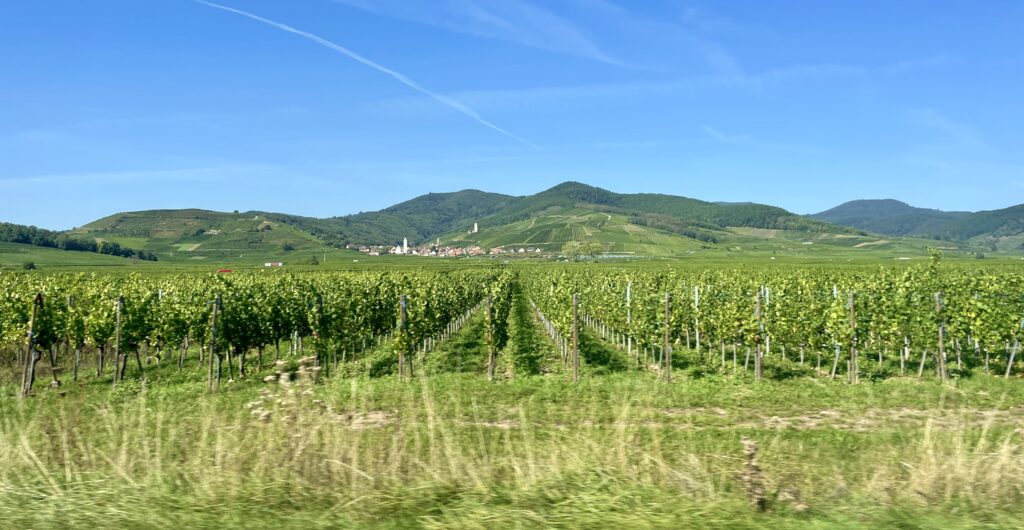
Colmar
Colmar is a town in the Alsace region of France known for its picturesque half-timbered houses, its charming canals, and its vibrant Christmas markets. We stayed in the Alsace region for a little over a week and used Colmar as our home base. In my opinion, it’s the perfect spot to stay in Alsace due to its smaller size and proximity to many of the towns on the Alsace Wine Route. It’s also very close to Strasbourg, Basel, and Freiburg, so those larger cities are all potential day trips.
Colmar is an extremely relaxing town; it was fun to just walk around the beautiful streets (especially the Petite Venise area) and try all the amazing Alsatian food and wine. We definitely recommend doing a walking tour, exploring the covered market, and visiting the Hansi gift shop for all of your souvenir needs.
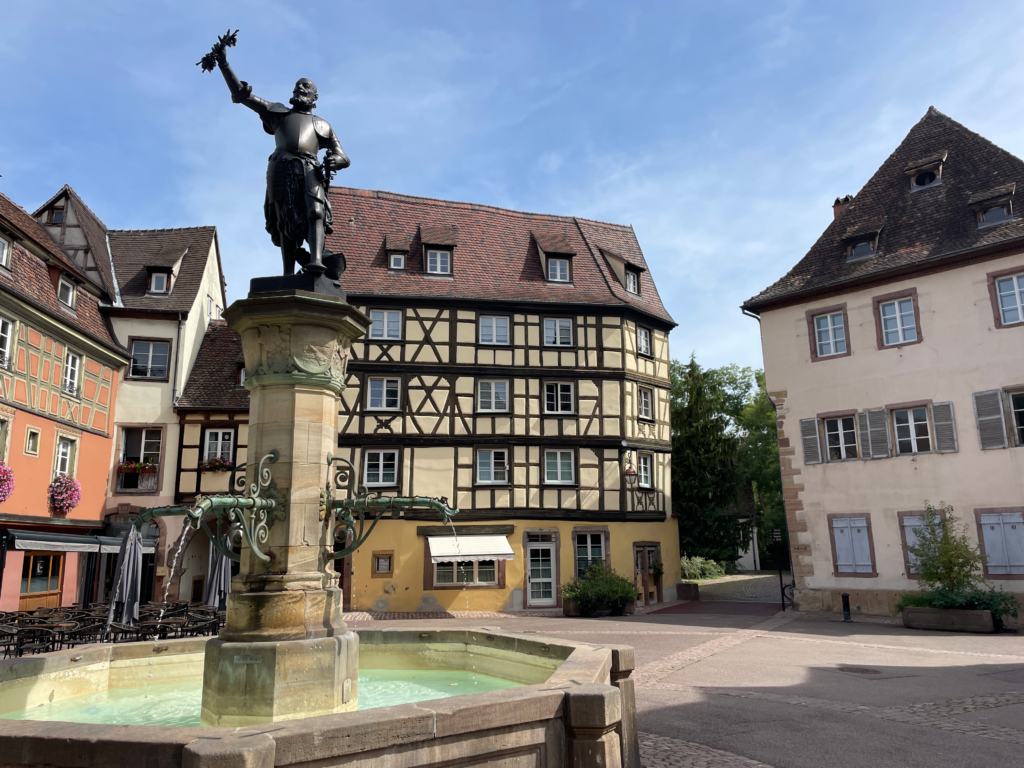

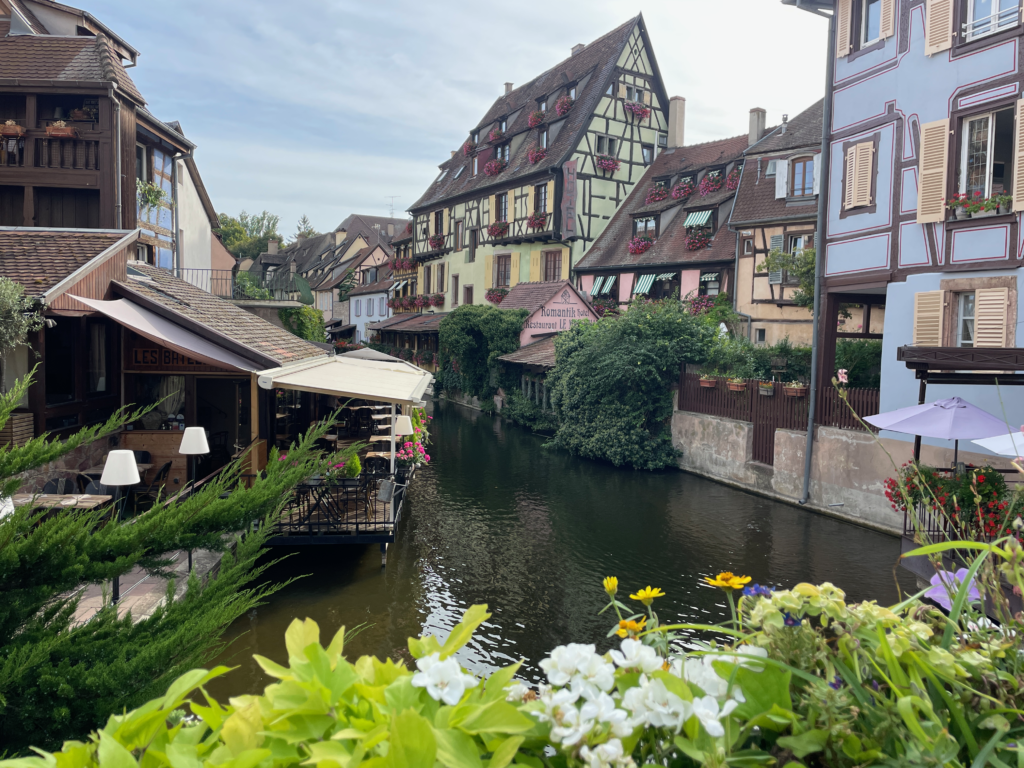
Strasbourg
Strasbourg is the capital of the Grand Est region of France and is located on the Ill River, at the border with Germany. It is a beautiful city with a rich history and culture, and is known for its Gothic cathedral, Christmas markets, and many canals. This city is absolutely beautiful and deserves it’s own multi-day visit in order to experience all that it has to offer – make sure not to miss the wine cellar in the basement of the Civic Hospital!
If you want to read about the best things to do in Strasbourg, check out our article!
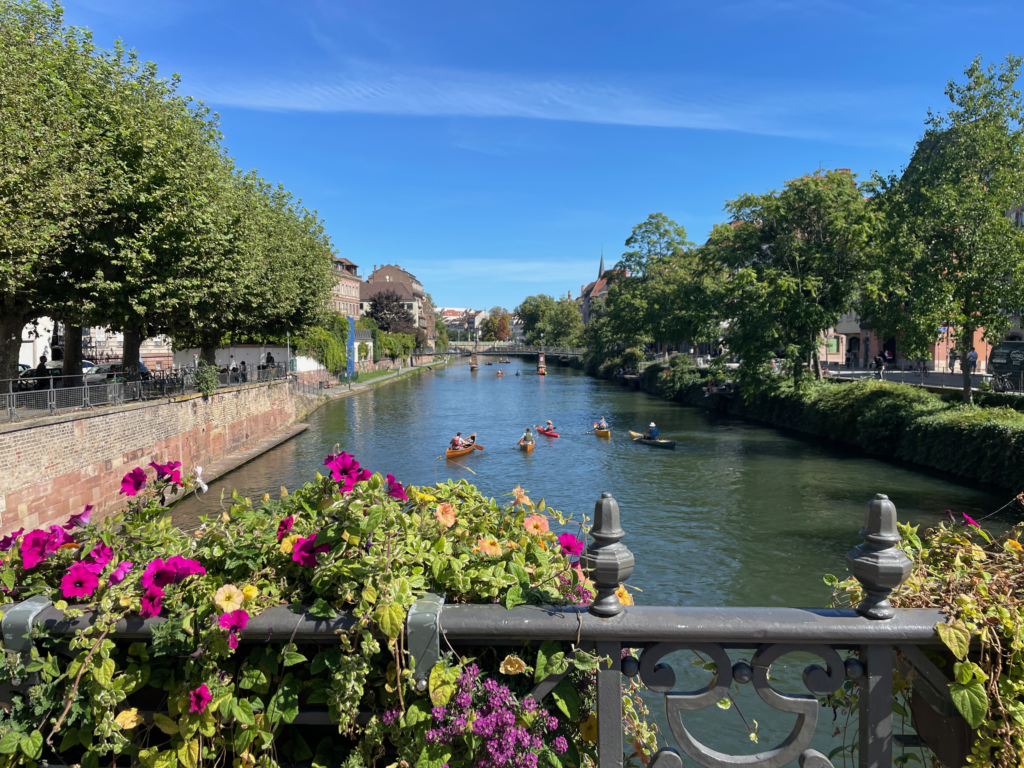
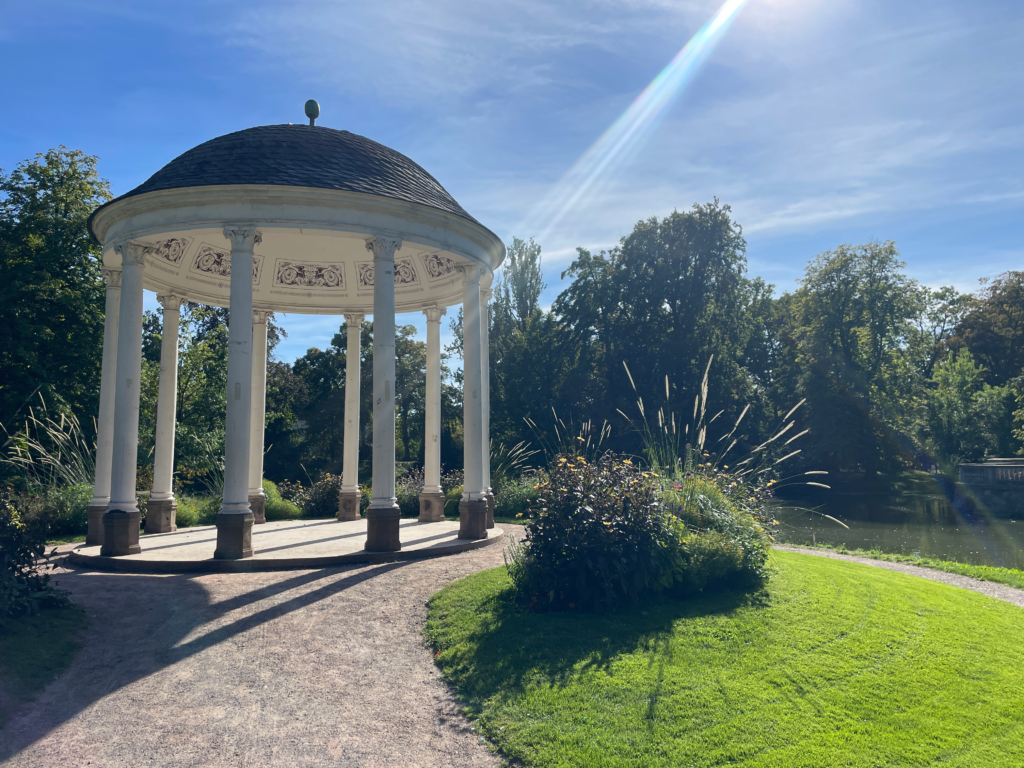
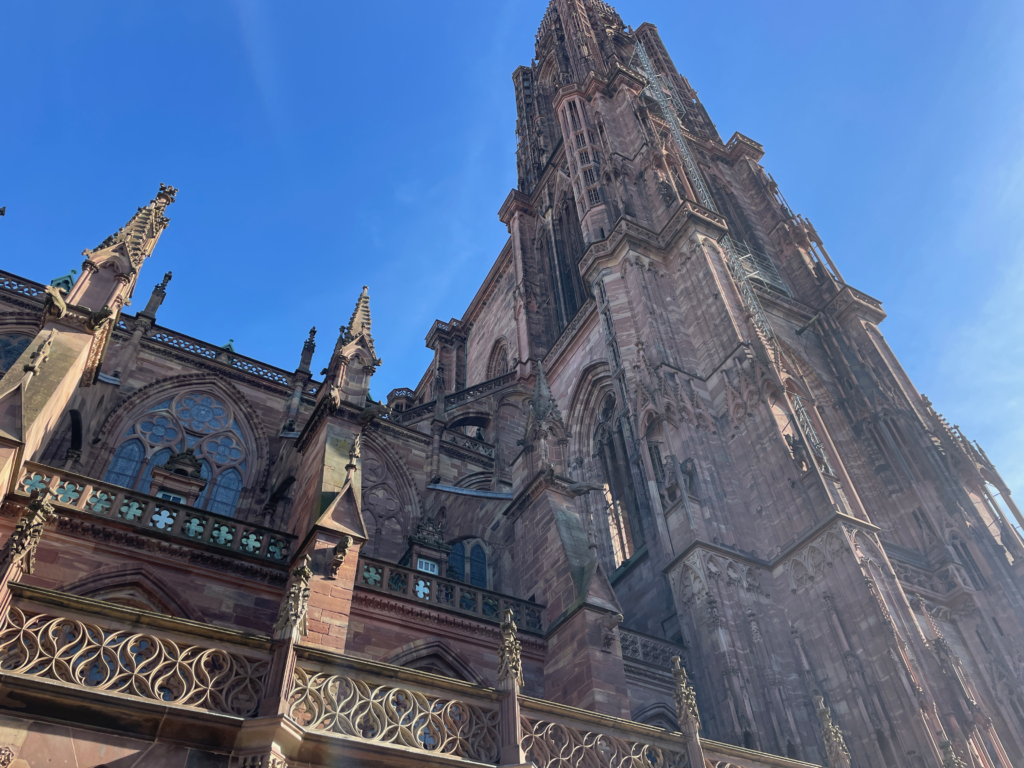
Riquewihr
Riquewihr is a beautiful medieval village in the Alsace region of France. The village is surrounded by vineyards, and the wine produced here is some of the best in the world. Riquewihr is absolutely stunning, and it was one of our favorites of the small towns we visited (tied with Kaysersberg). If you find yourself here, we highly recommend visiting the Féerie De Noël Christmas shop, it was huge and really cool.
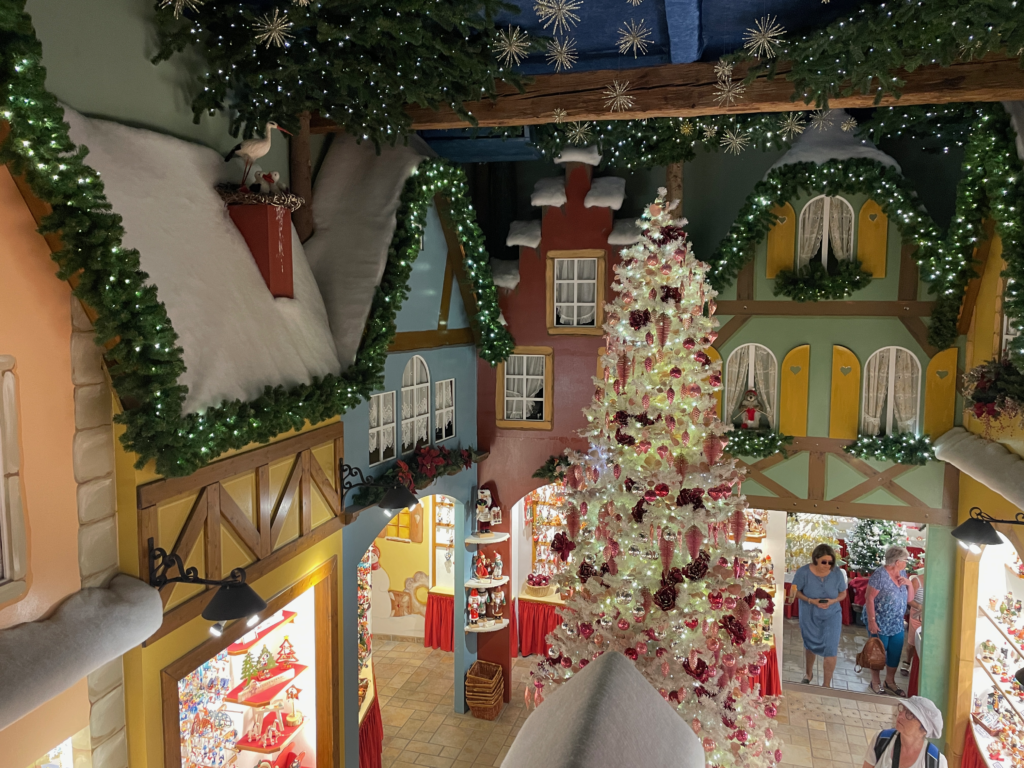
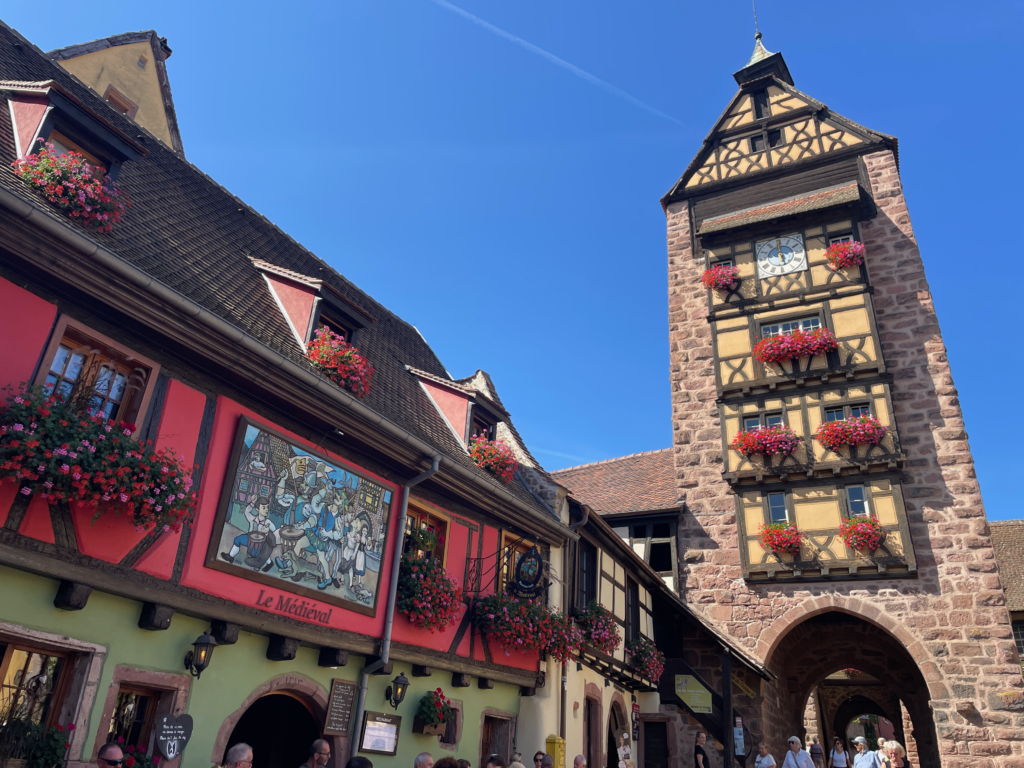
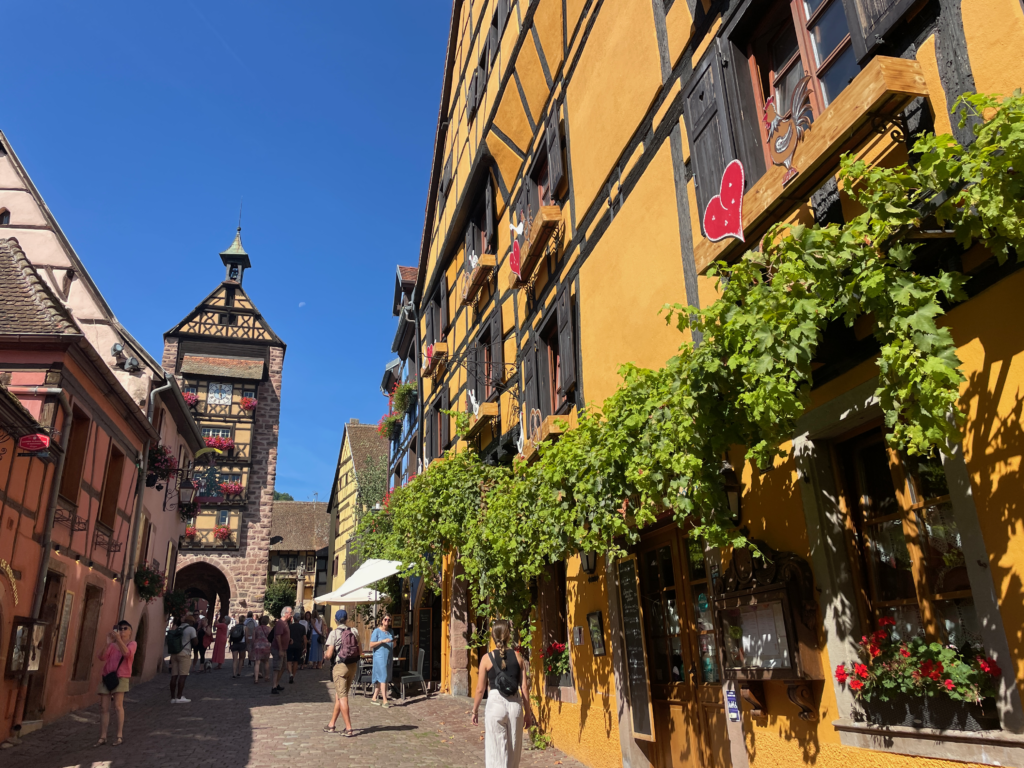
Kaysersberg
Kaysersberg is a charming and picturesque town, and it is a great place to visit if you are looking for a taste of Alsace. This was our other favorite of the villages we visited. The town itself is beautiful, and it also has a castle you can climb up for panoramic views of the surrounding towns and vineyards.
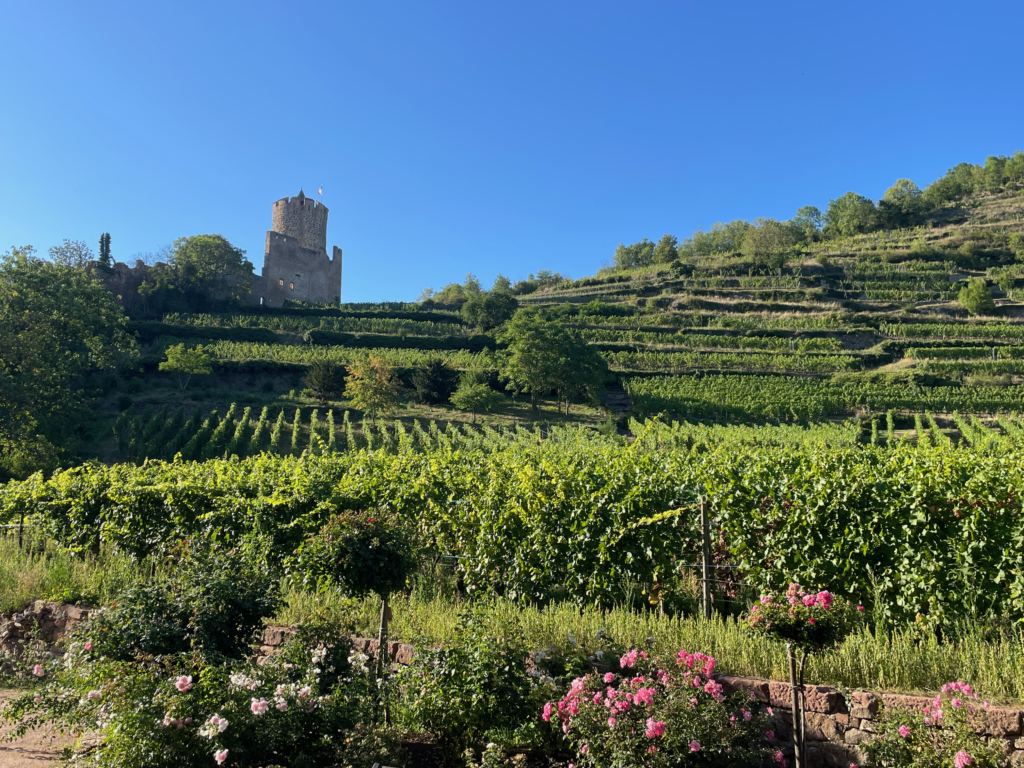
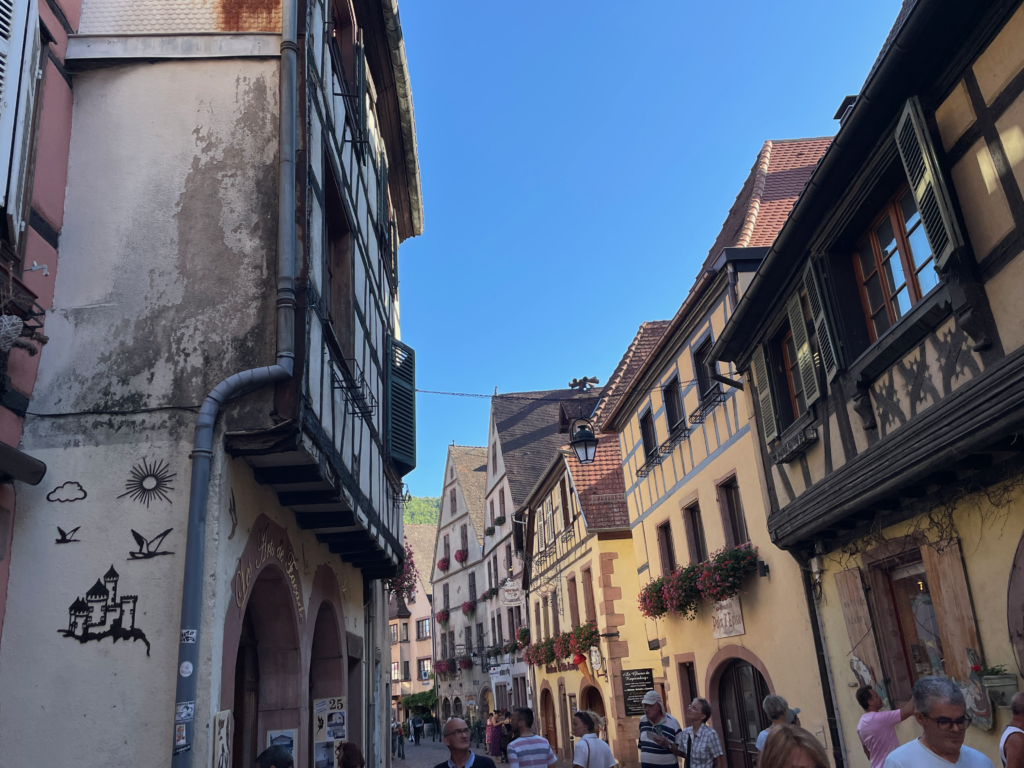

Turckheim
Turckheim is another cute town located right outside of Colmar. If you’re interested in history, you may enjoy the WWII museum located here that gives interesting insight about Alsace during that time. A ticket to this museum also gets you a free wine tasting at Cave de Turckheim, where you can find many types of wine for a great price!
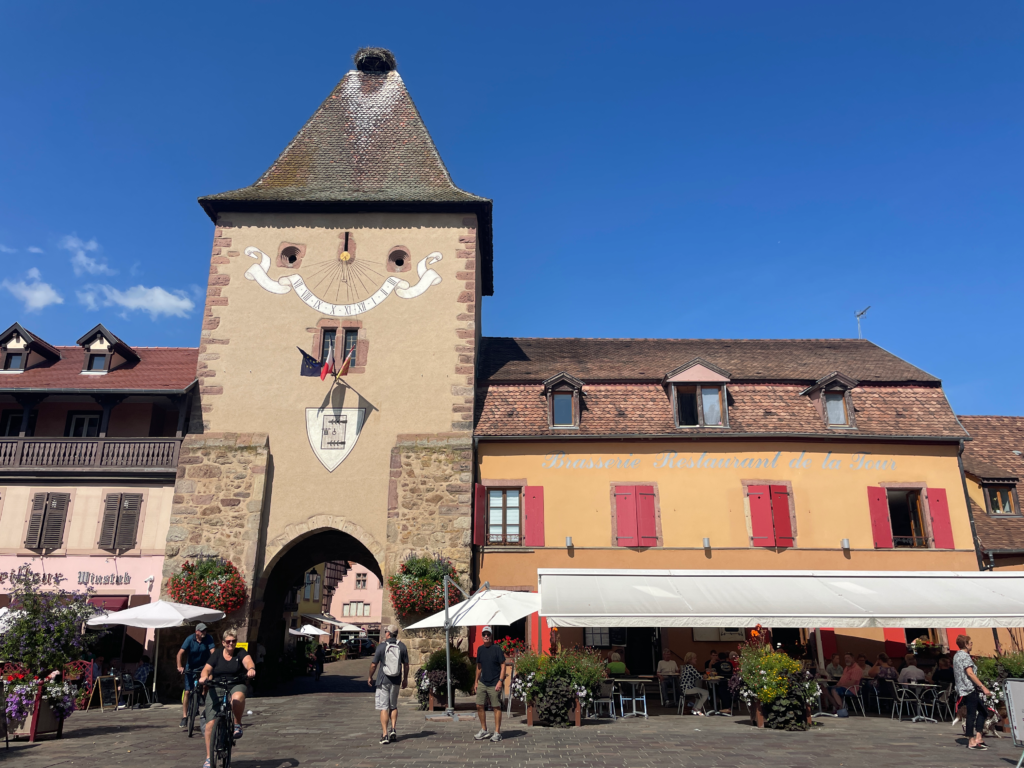

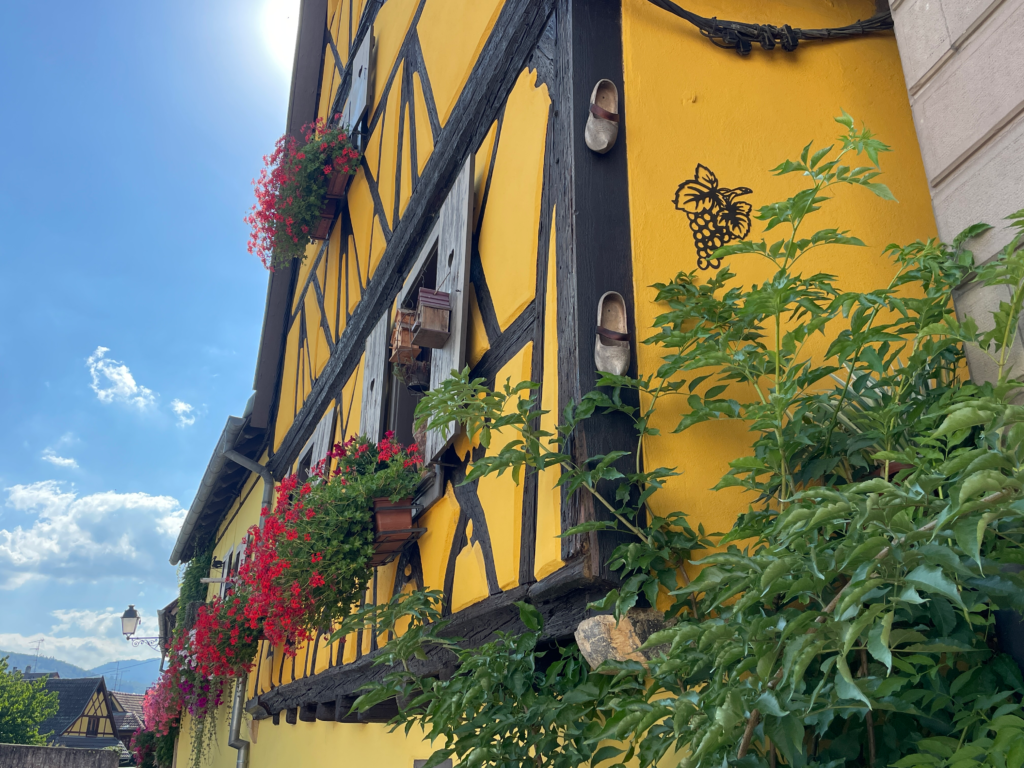
Ribeauville
Ribeauville is located on the Wine Route, between the vineyards and mountains. The Grand Rue (main street) is lined with half-timbered houses, and there are many shops and restaurants. It’s also home to the ruins of three castles: the Château du Haut-Ribeaupierre, the Château du Girsberg, and the Château du Saint-Ulrich. This is one of the largest of the towns surrounding Colmar, so it may not feel as quaint as the others. However, it’s definitely still worth exploring, especially if you have time to visit any of its castles.
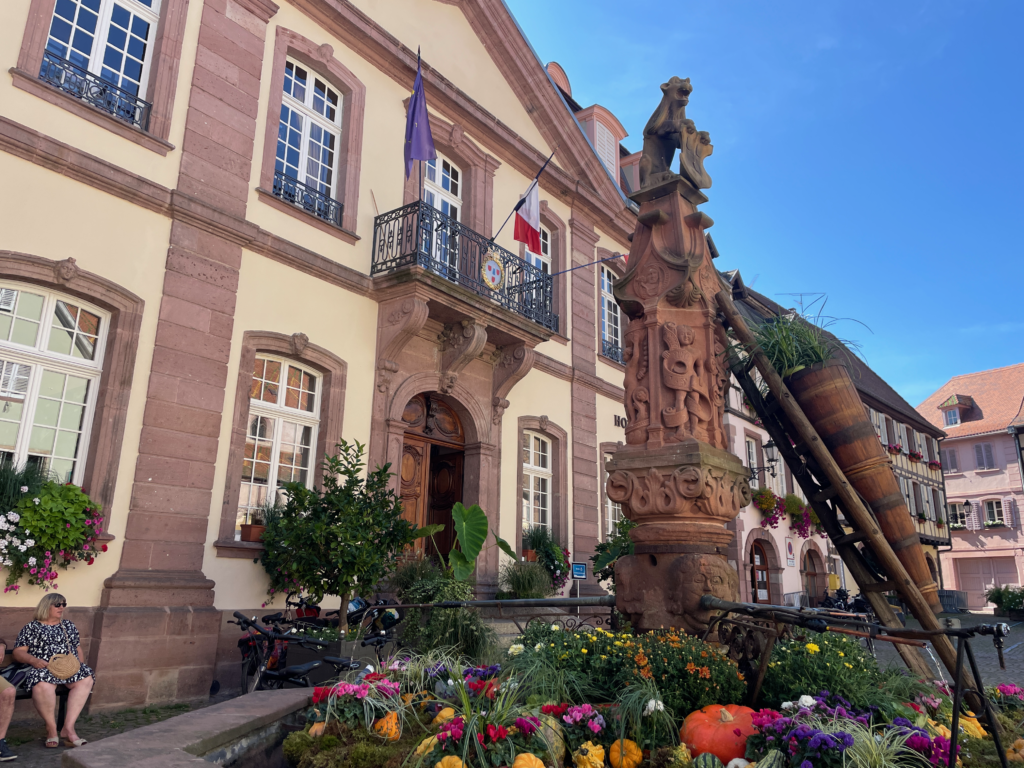
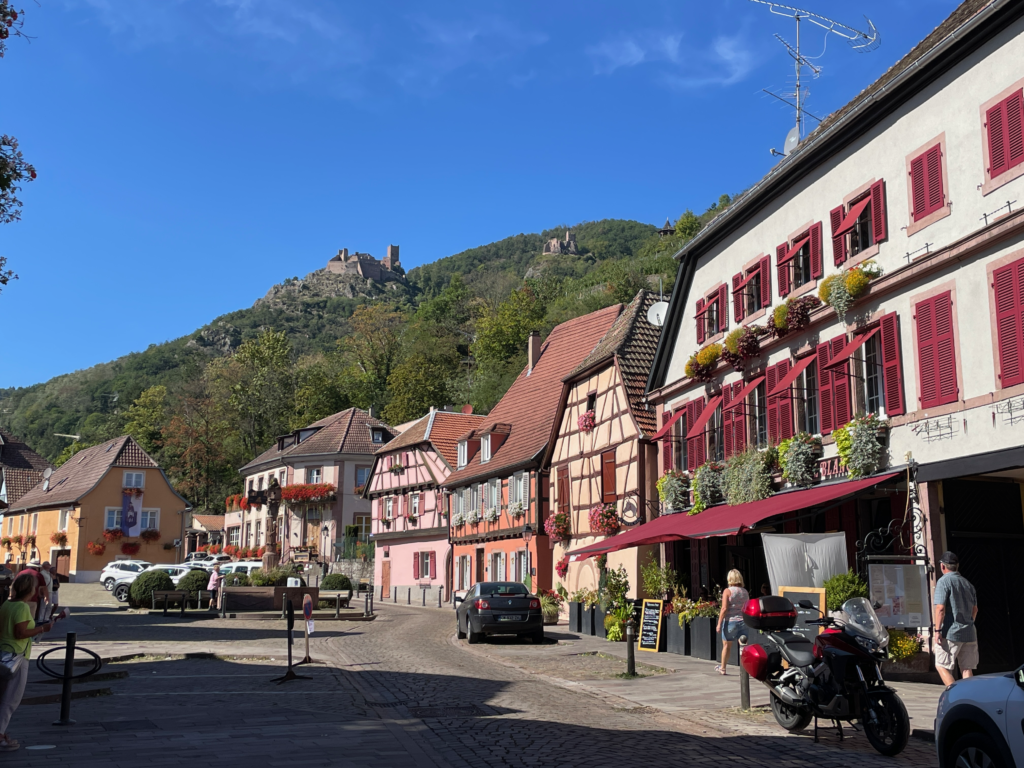
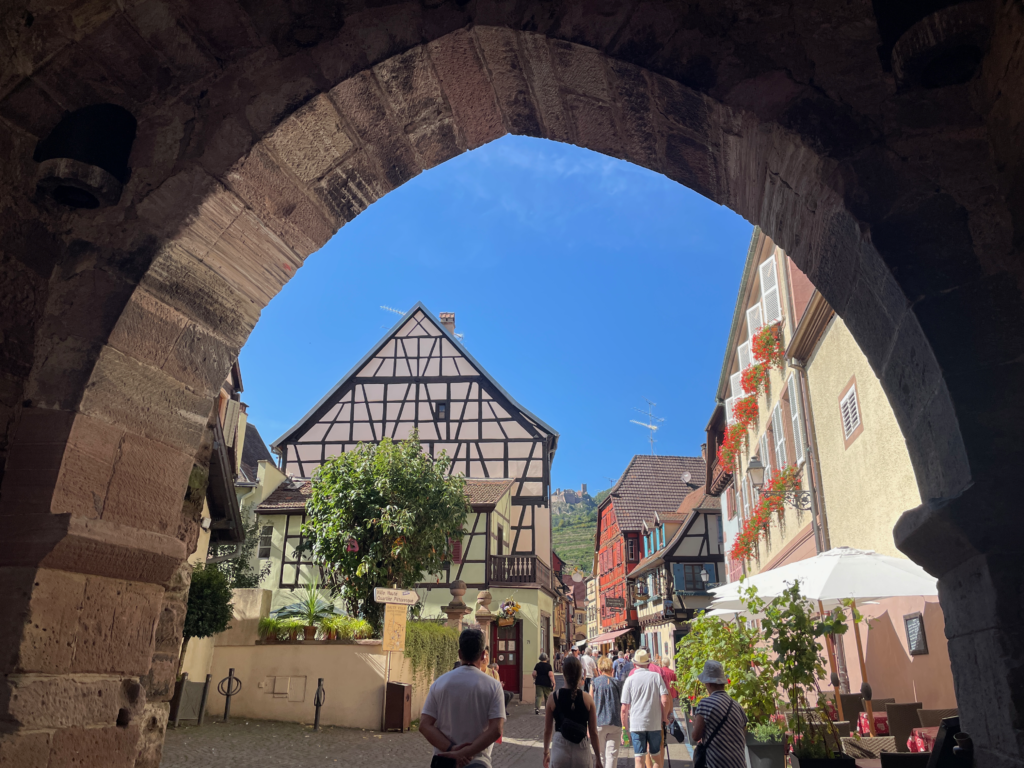
Château du Haut-Kœnigsbourg
The Château du Haut-Kœnigsbourg is a beautiful and impressive castle that is an absolute must-see when visiting Alsace. It is a reminder of the rich history of the region and the important role that the castle played in the region’s defense. The castle itself is very large and fun to explore (I highly recommend doing the audio tour!), and its watchtower yields amazing views of surrounding villages and vineyards.
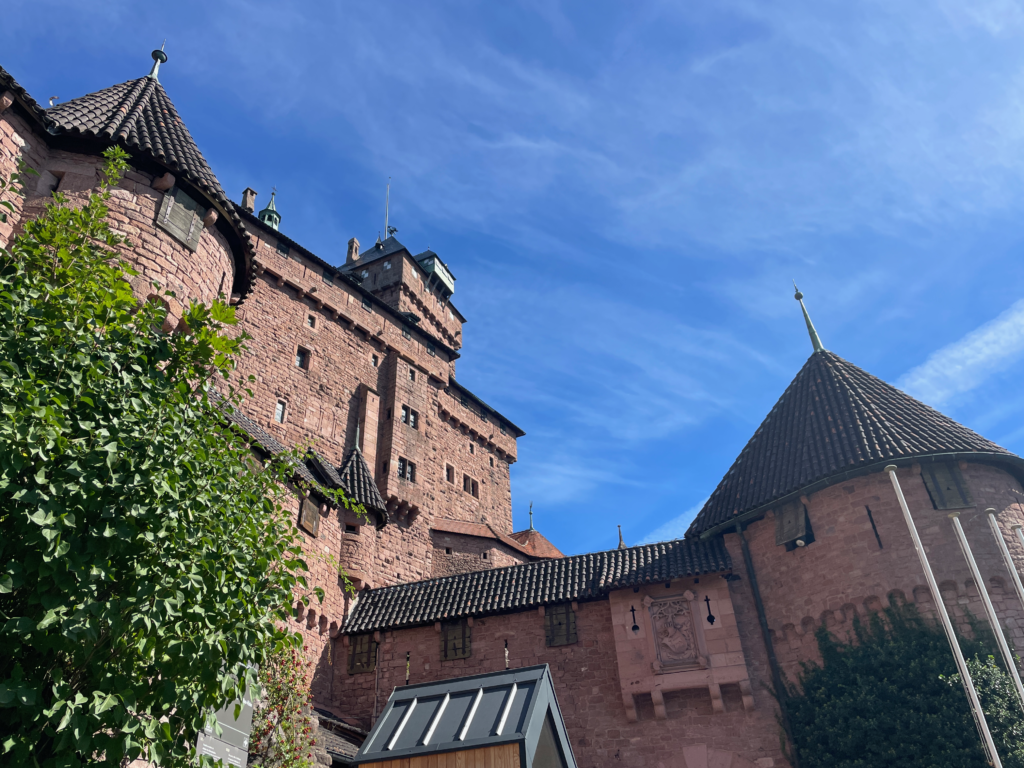
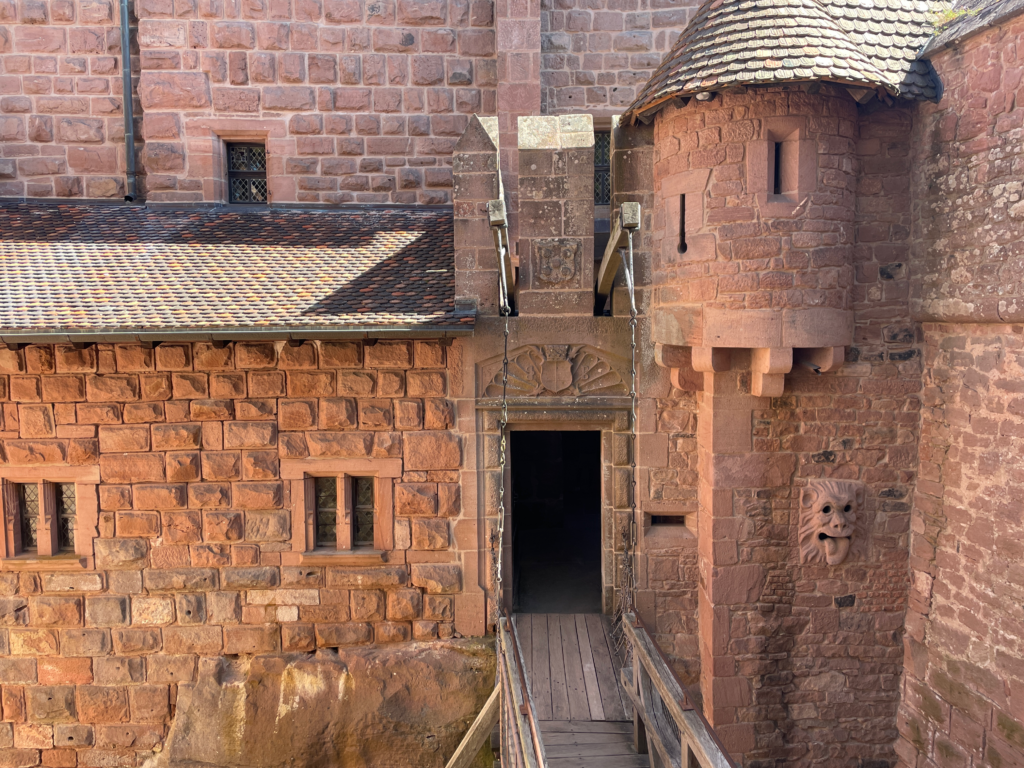
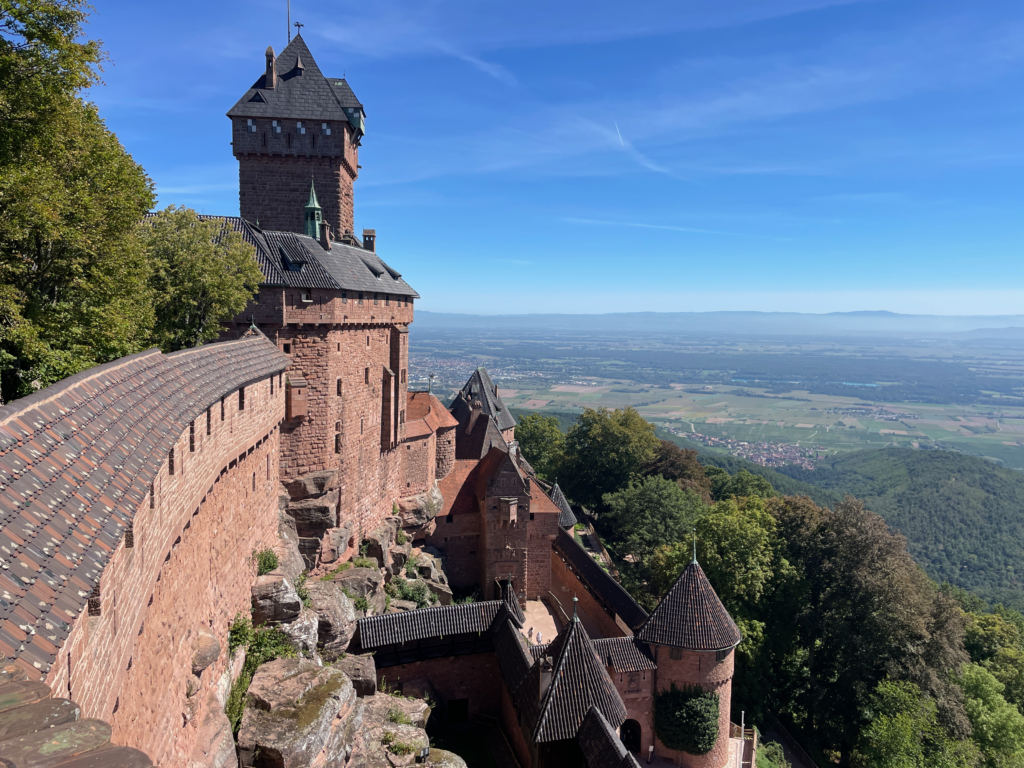
The Wines
When talking about Alsace, we obviously have to mention the wines (specifically white wines) that make this region famous. Alsace is home to over 500 grape varieties, but the most common are:
- Riesling: Riesling is the most popular grape variety in Alsace. It produces dry, crisp wines with flavors of citrus, apple, and peach.
- Pinot Gris: Pinot Gris is another popular grape variety in Alsace. It produces dry, fruity wines with flavors of pear, peach, and apricot.
- Gewurztraminer: Gewurztraminer is a full-bodied, aromatic grape variety that produces wines with flavors of lychee, rose, and spice.
- Muscat: Muscat is a sweet grape variety that produces wines with flavors of grape, orange blossom, and honey.
- Pinot Blanc: Pinot Blanc is a light-bodied, versatile grape variety that can be used to make both dry and sweet wines. Pinot Blanc wines typically have flavors of apple, pear, and white flowers.
- Sylvaner: Sylvaner is a light-bodied, refreshing grape variety that is typically made as a dry wine. Sylvaner wines have flavors of citrus, apple, and minerality.
I’m personally a dry wine girl, and my favorites were the Sylvaner and Pinot Blanc. If you find yourself in Alsace, definitely do yourself a favor and visit some of the wine cellars (you can find them by looking for the word “Cave”).
Amazing Traditional Food
Now that we’ve discussed the wines, lets talk about food! Alsatian cuisine is a fusion of French and German cuisine, with a strong emphasis on pork, sausages, and cheeses. Some of the most popular Alsatian dishes include:
- Baeckeoffe: This is a traditional Alsatian dish of beef, pork, and potatoes, cooked in a sealed pot in the oven.
- Fleischnacka: This is a dish of meat-filled pasta, typically made with beef, pork, and onions. The meat filling is spread on a sheet of fresh pasta and rolled up, then sliced into thick pieces and cooked in a broth.
- Flammekueche: This is a type of tarte flambée, a thin-crust pizza with toppings of onions, bacon, and cheese.
- Choucroute garnie: This is a Alsatian version of sauerkraut, served with sausage, pork, and other meats.
- Kugelhopf: This is a sweet yeast cake, often served with plums or raisins.
My personal favorite dishes were Baeckeoffe and Fleischnacka; I found the food in this region to be absolutely unbelievable. If you’re in Colmar, I definitely recommend going to Wistub de la Petite Venise and Restaurant La Romantica.
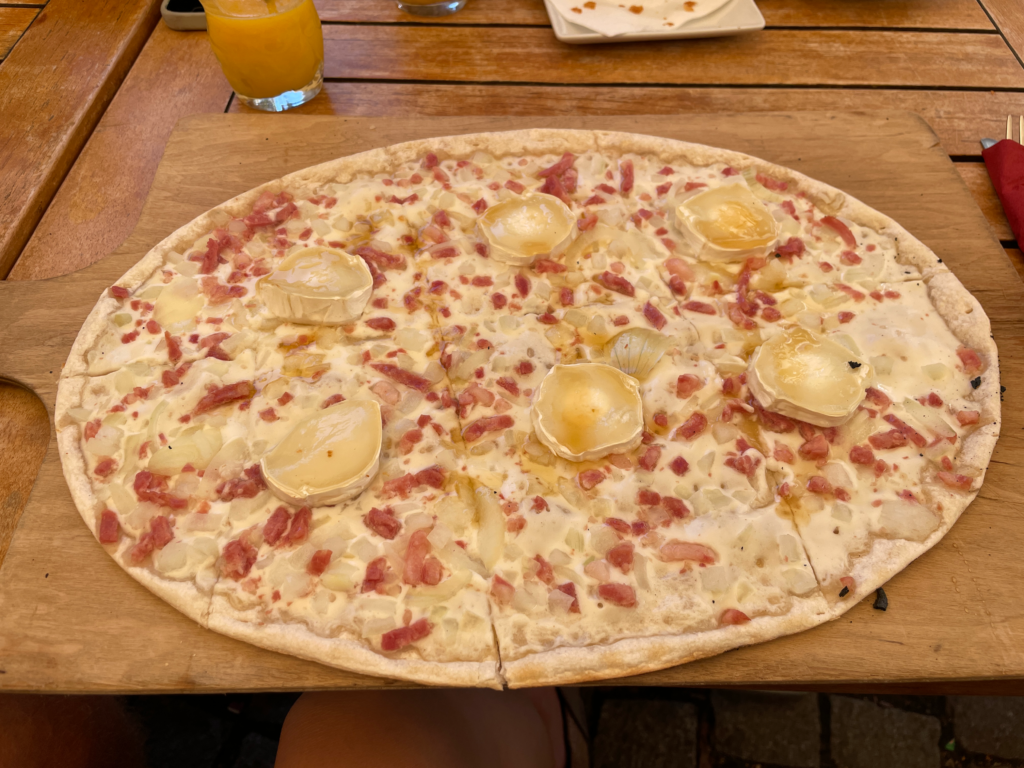
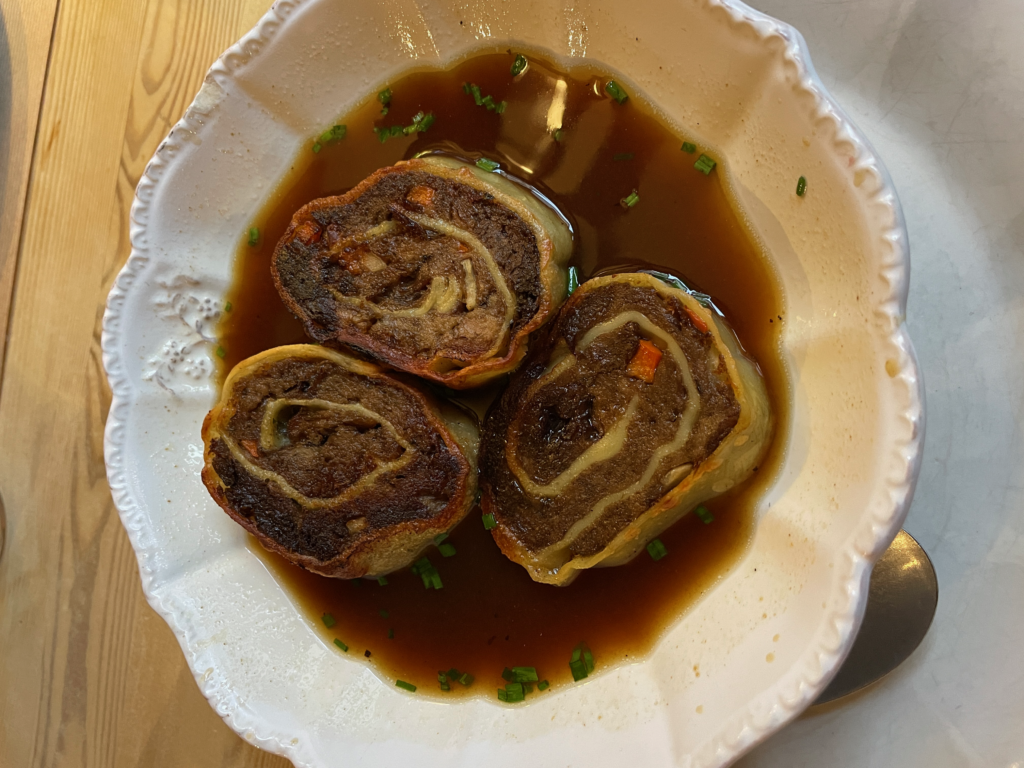
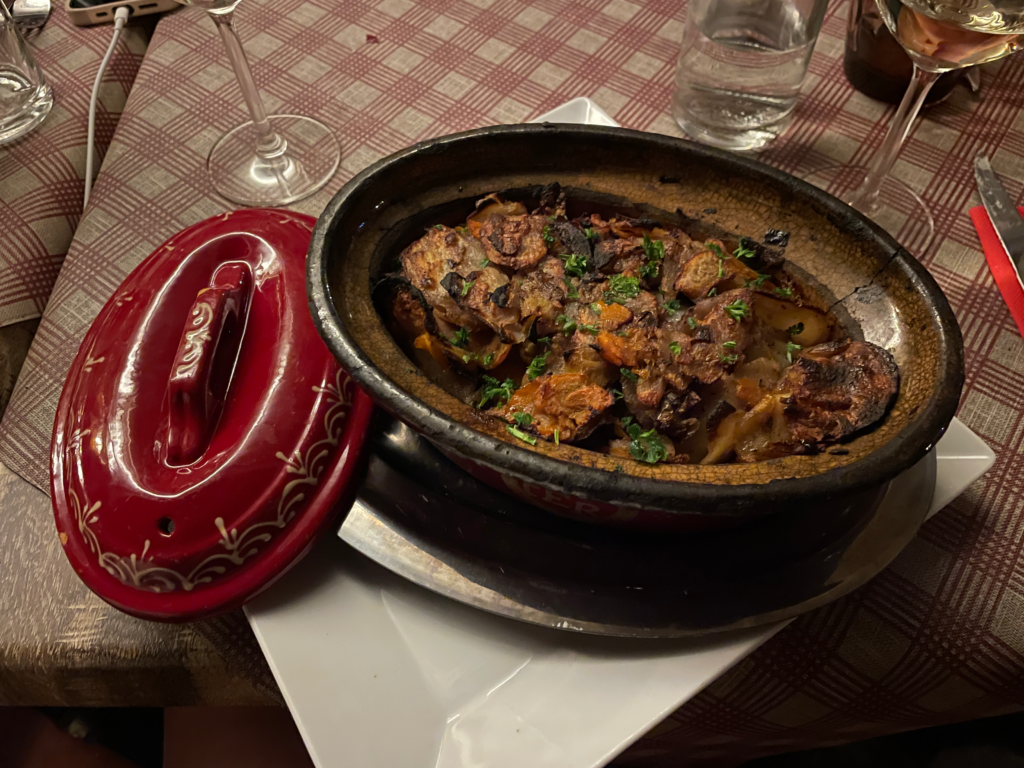
Best Time to Visit Alsace
Honestly, the Alsace region is amazing year round. Summer has the best weather, but it is also the most popular time to visit, ushering in sizable crowds and higher prices. The fall and spring are probably the best times to visit, though you may experience a bit of colder weather.
If you’re into Christmas markets, the Alsace region in winter should absolutely not be missed. Colmar is an amazing town to experience Christmas-time in – this is definitely something that’s on my bucket list!
Where to Stay in Alsace
When we stayed in Alsace, we used Colmar as our home base. This was perfect for us, because it’s right near all the cute villages, not as busy as Strasbourg, and still has a lot to do within the town. I highly recommend staying in Colmar, and maybe even spending a night or two in some of the smaller villages nearby.
Colmar Accommodations
How to Get to Alsace
It is incredibly easy to get to the Alsace region due to how well connected France is in terms of airports and fast public transportation.
How to Get to Alsace by Plane
Depending on where you’re heading to in the Alsace region, there are a couple different airports you can fly into. The largest one is Strasbourg (SXB). This airport has direct flights from tons of domestic and international locations.
Another airport to check out is the Basel-Mulhouse-Freiburg Airport. This airport is located in France but has a French and Swiss side so that you won’t have to go through customs regardless of which country you’re heading to (an important note on renting a car here is in the next section). This airport is also serviced by flights from many international destinations, so this is a great option if you’re staying in Colmar.
Check out Cheap Flights to the Alsace Region on Skyscanner
How to Get to Alsace by Train
The Alsace region is extremely well connected to other parts of France as well as neighboring countries. This is the easiest and fastest way to travel around France.
Average journey times from popular cities to Colmar by train:
- Strasbourg: 30 Minutes
- Basel: 45 Minutes
- Paris: 2.5 Hours
- Zurich: 2 Hours
- Bern: 2 Hours
- Frankfurt: 3 Hours
Buy your Train Tickets with SNCF
How to Get to Alsace by Bus
We definitely recommend using the trains over the buses for a more pleasant experience and faster travel time, but sometimes bus schedules work out better! France is super easy to get around by bus, and there are a number of routes you can take.
Book your Bus Tickets with Flixbus
Getting Around Alsace
There are several ways to get around Alsace. The most popular way is by train. The regional express trains (TER) are frequent and connect most of the towns and villages in the region. There are also high-speed TGV trains connecting Alsace to other parts of France and Europe. You can also get around by bus if you prefer.
That being said, we recommend getting a rental car. Having a car will make it much easier to visit the small villages that aren’t on the train route as well as Château du Haut-Kœnigsbourg. However, I understand that sometimes rental cars aren’t in the budget, in which case there are buses (that I believe are not super frequent, so that would require some planning) as well as organized tours that can bring you around.
Tip: If you are flying into Basel and plan on renting a car, please note that the airport has two terminals: one French and one Swiss. Each of them has their own rental car area, so there are pretty much two of each rental car company in the airport. If you’re heading to Alsace, make sure that you make your booking on the French side, as it’s much harder to access the Swiss side when you’re coming from France, and you’ll have to return the car from the terminal you rented from.
Great Tours to Explore Alsace from Colmar
If planning isn’t your thing and you just want to be driven around to see the highlights of the Alsace region, we’ve got you covered. There are a number of awesome, highly recommended tours that you can use to explore this region exactly how you want! Check out some of them below:
- For a tour that focuses on the towns of the area – specifically Eguisheim, Kayserberg, Ribeauvillé, and Riquewihr – check out this small group tour. Along the way, you’ll get to sample amazing wines and have ample time to explore each of the beautiful towns.
- If visiting cute towns as well as the Château du Haut-Kœnigsbourg is what you’re looking for, this tour may be better!
- If you’re looking for a private and completely customizable tour of the area, look no further! On this tour, you’ll be able to spend a few hours exploring the area however you please with a very informative guide.
- For a more active exploration of Alsace, check out this bike tour. The tour guide will provide bikes and helmets, and then you’ll cruise through small Alsatian towns with stops to try some wine!
- If the main highlight of your Alsace trip is wine (as it should be), then this full-day wine tour is perfect for you. This tour will bring you to three different wineries
Keep Exploring France….
Our Favorite Travel Resources
Accommodations: We use Booking.com for hotels and HostelWorld for hostels. We also use VRBO or TrustedHousesitters for longer stays.
Flights: We recommend using Skyscanner to find the cheapest and best flights.
Ground Transport: We use 12Go and Omio for buses and private transfers, and rentalcars.com and Discover Cars for rental cars.
Activities: GetYourGuide and Viator are the best websites for booking organized tours.
International Medical Insurance: We highly recommend SafetyWing for Digital Nomads and HeyMondo for those not traveling full-time, or who frequently engage in higher-risk adventure activities.
eSIM: We recommend Airalo or Holafly for getting data internationally.
Check out our Travel Resources Page for more of our favorite travel-related products and services!
